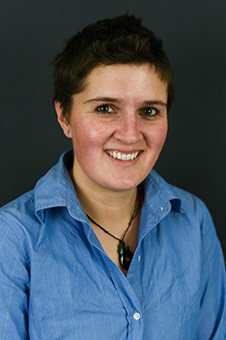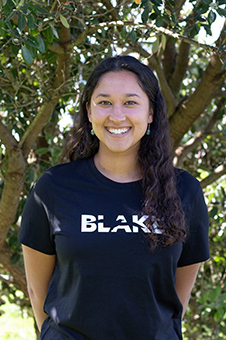Two University of Otago emerging researchers have secured more than $800,000 to boost New Zealand's pest management efforts.

Dr Alana Alexander
Postdoctoral Fellow Dr Alana Alexander (Ngāpuhi: Te Hikutu, Pākehā) and PhD student Miss Anna Clark have both secured funding from Predator Free 2050, which aims to enable predator control and eradication projects at a large landscape scale.
Dr Alexander has secured a $640,000 three-year grant to look for genes important to possum reproduction and survival that could be used in pest control efforts.
It is a far cry from her earlier work looking into tohorā (whales) and pāpahu (dolphins), but Dr Alexander says she was inspired from working with chickadees, a group of birds that hybridise between species, when she was based in the USA.
While that research identified genes to help them survive in different environments, Dr Alexander is looking to do the opposite and investigate how that method can help possum control efforts.
"Being able to be part of a cohort of folks looking to tackle some of the big problems facing Aotearoa's fauna and flora due to predators is a really cool opportunity, and I'm looking forward to learning from other grantees about their program of research.
"This has also been a really cool opportunity to be in charge of getting a program of research together. Demonstrating 'research independence' is really important for downstream job opportunities, and being able to create future opportunities for others, like graduate students."
Another element of her project will be developing materials in te reo for kura kaupapa Māori about genetically-mediated pest control.
For Dr Alexander, who grew up in te ao Pākeha and returned from the United States in 2017, the opportunity to place this research in a te reo and tikanga Māori context is significant.
"There aren't many kaipūtaiao (scientists) who can convey their work in te reo Māori, and I see our rangatahi at kura kaupapa as so critical to how we look after and utilise the taiao (environment) of Aotearoa going forward, so that's why it is important to me to make my research available to them in te reo Māori.
"It is also an excellent wero for my te reo to create these resources!"

Miss Anna Clark (Photo courtesy of BLAKE New Zealand)
Fellow recipient Anna Clark has received $180,000 over three years to do modelling on whether genetic pest control can occur across possums, stoats, rats and mice – even though there are different relationships that exist between these groups.
"My modelling work aims to develop a platform to test the outcomes of using genetic pest control technology in our local context, which will likely be useful for other international research groups in this field and guide further investment.
"Personally, I am committed to continuing work in this field as I believe we need to conduct our due diligence with this new technology before moving towards decisions."
Miss Clark says she was inspired by a Department of Conservation project with her high school in the Nina Valley within the Lewis Pass. While they managed to trap a significant number of pests, they managed to reintroduce kiwi into the area. She says, however, that there were limitations.
"There was no end date for our pest control work, and we were conducting a large amount of work for just one valley.
"That got us thinking about the potential to find methods that could produce more sustained population management and could be used across the country so that everyone could experience observing a whio in a local stream, or a parakeet in a local park."
The Predator Free 2050 funding comes from the Jobs for Nature funding, which is provided by the Government as a response to COVID-19.






